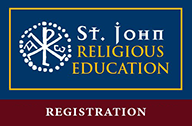Bulletins
October 18, 2015
Download the Bulletin as a PDFAmong my more memorable experiences of the visit of the Holy Father to the United States were the rehearsals for the Mass of Canonization.
At the beginning of the second rehearsal I attended one of the Assistant Papal Masters of Ceremony, Monsignor John Cihak, addressed all the servers and other volunteers. He is a priest of the Archdiocese of Portland in Oregon and also a seminary classmate of mine. Monsignor reminded all present that the primary protagonist in the Sacred Liturgy is the Holy Trinity. From that he expounded on the nature of reverence, both as a matter of interior activity and exterior stillness. Attentiveness to the divine mysteries is manifested, therefore, by motion which is both solemn and natural.
He also spoke at length about the appointment of Cardinal Sarah by Pope Francis as the Prefect for the Congregation for Divine Worship. "Sarah" is his last name. His Eminence Robert Cardinal Sarah hails from the African country of Guinea. When that appointment took place last November Cardinal Sarah asked His Holiness "How do you want me to exercise this ministry? What do you want me to do as Prefect of this Congregation?" The Holy Father's said, "I want you to continue to implement the liturgical reform of the Second Vatican Council and I want you to continue the good work in the liturgy begun by Pope Benedict XVI."
At a conference in New York City which I attended this past June Cardinal Sarah expounded on this conversation. He told the attendees that:
I want you to help me in this task. I ask you to continue to work towards achieving the liturgical aims of the Second Vatican Council (cf. Sacrosanctum Concilium, I) and to work to continue the liturgical renewal promoted by Pope Benedict XVI, especially through the Post-Synodal Apostolic Exhortation Sacramentum Caritatis of 22 February 2007 and the Motu Proprio Summorum Pontificum of 7 July 2007. I ask you to be wise, like the householder in St. Matthew's Gospel, who knows when to bring out of his treasure things both new and old (cf. Mt:13,52), so that the Sacred Liturgy as it is celebrated and lived today may lose nothing of the estimable riches of the Church's liturgical tradition, whilst always being open to legitimate development (cf. Sacrosanctum Concilium, 23).
In the weeks to come we will expound on this two-fold mandate from Pope Francis. In the meantime I encourage you to read the three documents mentioned. And we would do well to heed the last bit of advice that Monsignor Cihak offered the servers: read everything Cardinal Ratzinger wrote on the liturgy.
God bless you,
Rev. Christopher Pollard



